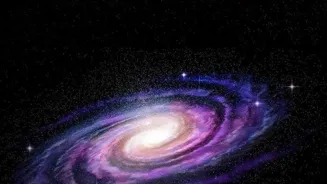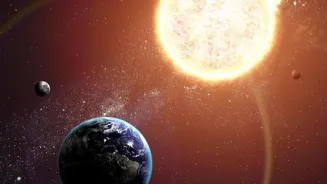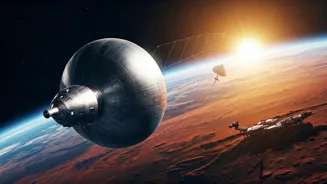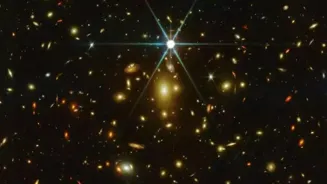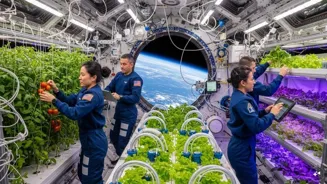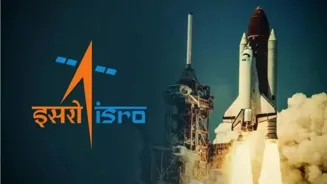Unveiling Solar System's Hidden Marvels: Beyond Earth's Moon. Discover the mesmerizing worlds orbiting planets. Delve deeper!
We all know our own moon, that silvery orb that lights up the night sky and
controls the tides. But did you know that our solar system is teeming with moons, each one a unique and fascinating world in its own right?
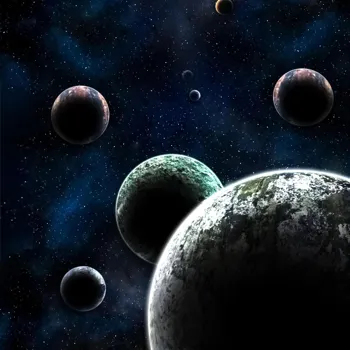
These celestial bodies are more than just rocks orbiting planets; they offer clues about the formation of our solar system and even hold the potential for harboring life. Let's take a trip beyond Earth's familiar companion and explore some of the most interesting moons out there.
Forget simple, cratered surfaces – we're talking about moons with active volcanoes, subsurface oceans, and atmospheres thicker than Mars'. Prepare to be amazed by the sheer variety and wonder that lies beyond our own lunar backyard.
Europa, Jupiter's moon, holds potential for life with its hidden ocean
One of the most captivating moons is Europa, orbiting Jupiter. While it appears icy and smooth on the surface, scientists believe a vast ocean lurks beneath the frozen shell. This ocean, kept liquid by tidal forces from Jupiter's gravity, could potentially harbor life.
Imagine that, life existing in the darkness, far away from the sun, nourished by chemical reactions within the moon's core! The possibility is so exciting, and space agencies around the globe are planning missions to investigate Europa further.
They will be looking for signs of water plumes erupting from the surface, hoping to sample the ocean without even having to drill through the ice. Europa truly represents one of the best hopes for finding life beyond Earth.
Enceladus, Saturn's moon, showcases geysers with potential for life
Enceladus, a small moon orbiting Saturn, is another hotspot of scientific interest. This icy world boasts geysers that spew water vapor and ice particles into space, creating a beautiful ring around Saturn.
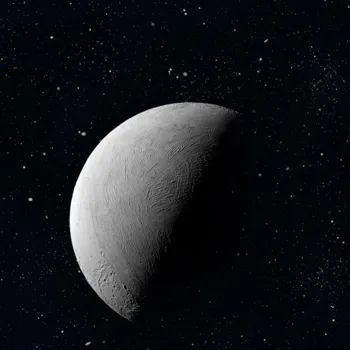
These geysers originate from a subsurface ocean, similar to Europa's, and contain organic molecules. The presence of these molecules, along with liquid water and a source of energy (tidal forces), makes Enceladus a potentially habitable environment.
What makes Enceladus so attractive for study is that its geysers provide a relatively easy way to sample the ocean without landing on the moon and drilling through thick ice. Scientists can simply fly through the plumes and collect the ejected material.
Titan, Saturn's moon, resembles early Earth with methane lakes, hinting at life origins
Titan, also a moon of Saturn, is unlike any other moon in our solar system. It possesses a thick, hazy atmosphere composed mainly of nitrogen, like Earth's, but with some methane thrown in for good measure. On the surface, you'll find lakes and rivers not of water, but of liquid methane and ethane.
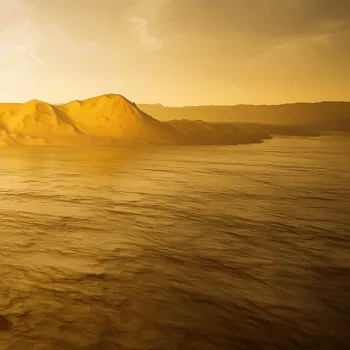
It even rains methane on Titan. It's a bizarre and alien world, but one that resembles a primitive version of early Earth. Exploring Titan might provide insights into how life could have arisen in a different environment.
Spacecraft have already landed on Titan, and future missions are planned to further explore this fascinating world, perhaps even using drones to fly through its dense atmosphere.
Io, Jupiter's moon, boasts intense volcanic activity, revealing geological insights
Io, another moon of Jupiter, is the most volcanically active world in the solar system. Forget the quiet, dormant volcanoes we have on Earth; Io's volcanoes are constantly erupting, spewing lava hundreds of kilometers into the atmosphere.
The surface of Io is a chaotic landscape of constantly changing volcanic features, colored yellow, orange, and red by sulfur compounds. The intense volcanic activity is driven by tidal forces from Jupiter, which squeeze and stretch Io, generating immense heat within its interior.
While not a likely candidate for life, Io provides valuable insights into the geological processes that can shape planetary bodies.
Moon holds ancient secrets, water ice for future missions
Our own moon, while familiar, is also quite interesting. It's not just a barren rock; it holds a wealth of information about the early solar system.
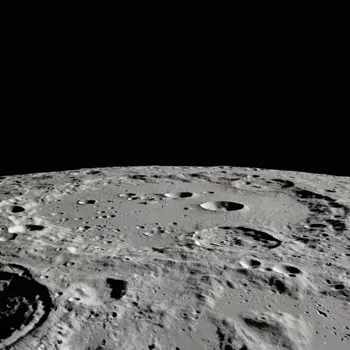
The moon’s craters tell the tale of billions of years of asteroid impacts, a record that has been largely erased on Earth due to erosion and plate tectonics. Furthermore, recent discoveries have revealed the presence of water ice in permanently shadowed craters near the lunar poles.
This water ice could potentially be used as a resource for future lunar missions, providing drinking water, fuel, and even oxygen. The moon will play a crucial role to serve as a launchpad to other planets.
Exploring diverse moons in our solar system reveals cosmic wonders
These are just a few examples of the many fascinating moons in our solar system. Each moon offers a unique glimpse into the diverse processes that have shaped our cosmic neighborhood.
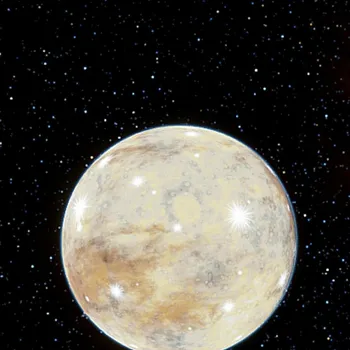
As we continue to explore these distant worlds, we are sure to uncover even more surprises and deepen our understanding of the universe and our place within it. The journey to explore the moons is ongoing, and the coming years will bring even more exciting discoveries.
Who knows, maybe one day we'll even find that life exists on one of these seemingly barren worlds. The exploration continues…
AI Generated Content. Glance/InMobi shall have no liability for the content